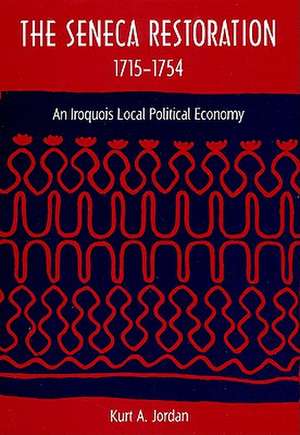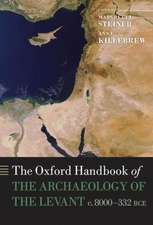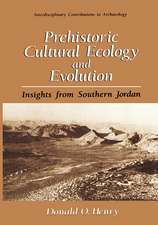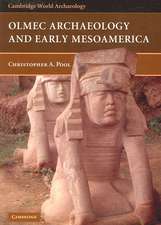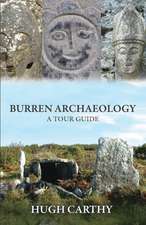The Seneca Restoration, 1715-1754: An Iroquois Local Political Economy: Co-Published with the Society for Historical Archaeology
Autor Kurt A. Jordanen Limba Engleză Paperback – 31 ian 2011
Jordan s archaeological approach to eighteenth-century Native American settlement patterns is original and creative. It sets a promising new standard for interdisciplinary investigations of the potential complexity underlying domestic and settlement choices. Martha L. Sempowski, Rochester Museum and Science Center and Seneca Archaeology Research Project
The Iroquois confederacy, one of the most influential Native American polities encountered by early European settlers, is commonly perceived as having plunged into steep decline in the late seventeenth century due to colonial encroachment into the Great Lakes region. Kurt Jordan challenges long-standing interpretations that depict the Iroquois as defeated, colonized peoples by demonstrating that an important nation of that confederacy, the Senecas, maintained an impressive political and economic autonomy and resisted colonialism with a high degree of success.
Following the 1700-1701 treaties with the English, French, and western Indian groups that ended the Twenty Years War, the Seneca commitment to neutrality was tested by western Indian attacks on their territory. French and English agents were frequent visitors to Seneca country, encouraging factional competition. This period also witnessed the opening of Iroquois territory to western Indian groups who wanted to trade with the English at Albany, and the formation of alliances between Senecas and western groups that made transit across Seneca territory possible. In the midst of these pressures, the Seneca maintained an impressive level of political and economic autonomy with a high degree of success.
Using historical and archaeological analysis, Kurt A. Jordan interrogates the concept of colonialism by demonstrating that the Seneca Iroquois (a member of the Six Nations Iroquois, or Haudenosaunee, confederacy) were entangled with, but not dominated by, Europeans during the first half of the eighteenth century. Even two hundred years after their initial engagement with Europeans, Senecas were extremely selective about which aspects of European material culture, plant and animal species, and lifeways they allowed into their territory.
Centering his analysis on the Townley-Read archaeological site near Geneva, New York, Jordan uses artifactual, faunal, botanical, textual, and spatial evidence to assess Seneca community structure, housing, subsistence practices, alliance and trade relations during the first half of the eighteenth century. He demonstrates that Seneca construction of dispersed communities during this period was an opportunistic innovation with a myriad of economic and ecological benefits; that house forms used by Iroquois exhibited much less European influence than scholars usually assert; and that the fur trade economy of western Iroquois Nations remained viable at least through the mid-eighteenth century.
These findings refute long-standing scholarly interpretations of eighteenth-century Iroquois political and economic development, which primarily have been based on documents written by colonial officials seeking to control Iroquois actions. By incorporating archaeological data and reassessing historical documents in light of new archaeological evidence, Jordan gives conclusive and solid support for a positive interpretation of the state of Seneca society in the first half of the eighteenth century and vividly depicts the local developments that made the Seneca Restoration possible.
"
Preț: 244.79 lei
Nou
Puncte Express: 367
Preț estimativ în valută:
46.84€ • 49.03$ • 38.99£
46.84€ • 49.03$ • 38.99£
Carte tipărită la comandă
Livrare economică 31 martie-14 aprilie
Preluare comenzi: 021 569.72.76
Specificații
ISBN-13: 9780813036854
ISBN-10: 0813036852
Pagini: 448
Dimensiuni: 156 x 234 x 23 mm
Greutate: 0.61 kg
Editura: University Press of Florida
Seria Co-Published with the Society for Historical Archaeology
ISBN-10: 0813036852
Pagini: 448
Dimensiuni: 156 x 234 x 23 mm
Greutate: 0.61 kg
Editura: University Press of Florida
Seria Co-Published with the Society for Historical Archaeology
